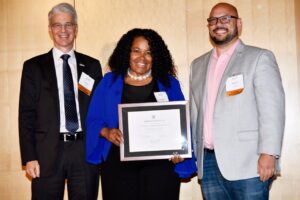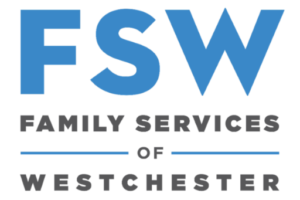 Every spring, school districts across New York State begin piecing together the budgets for the upcoming school year. It is a months-long process involving speaking with every department in the district, taking into account new regulations or legislation that has come down from the State Department of Education, and finding the right balance between providing the best education possible and minimizing the community’s tax burden. This year, however, political games in Albany have thrown another kink into the mix.
Every spring, school districts across New York State begin piecing together the budgets for the upcoming school year. It is a months-long process involving speaking with every department in the district, taking into account new regulations or legislation that has come down from the State Department of Education, and finding the right balance between providing the best education possible and minimizing the community’s tax burden. This year, however, political games in Albany have thrown another kink into the mix.
Each year, the Governor’s office releases State Aid information early in the year, alerting each district as to how much financial assistance they can expect to receive from the State. This year, however, Governor Cuomo has (as of this writing) yet to release this information. Instead, he is attempting to force the State Legislature to pass a series of education reforms, and has stated that he will not release the State Aid information until his reforms are passed.
So our area schools have been forced to begin the budget process somewhat blindly, by knowing that word could come down from Albany any day forcing them to drastically alter their budgets if the State Aid formula is vastly different from what they are expecting. So, while each year our annual school budget article is crafted with the caveat that these are only preliminary numbers, this year that is more true than ever.
Irvington Union Free School District
“We’ve completed presenting an overview of the various components of our budget and we will deliver the proposed budget presentation to the Board on Tuesday, March 24th,” says Dr. Kristopher Harrison, Superintendent of Schools. “However, despite any work that we’re doing, everything is going to fluctuate somewhat depending on what guidance we get from Albany regarding State Aid.”
Last year, Irvington received $3,267,000 in State Aid towards their budget of $56,294,000. This year, they are already expecting a drop in State Aid and have factored that into their preliminary projections. While they were unable to recite any hard numbers at the time of this writing, they emphasized the intention to minimize any tax increase. “We’re going to make adjustments to make our budget certainly underneath the tax levy cap,” says Dr. Harrison.
While nothing has been finalized, Dr. Harrison expects the 2015-2016 budget to include a number of new initiatives aimed at enhancing student experience. “The first would be looking at expanding our STEM programming,” he says. “We have a program at the high school, Project Lead the Way, and we’re exploring the prospect of growing that program to introduce STEM-related learning at the elementary and middle school levels.” Other new programs being considered include introducing a 5th grade world language program to begin restoring elementary world language that was reduced in previous, leaner budgets; providing financial support to a wider range of student-led clubs; and expanding Foundations (a Phonics program introduced last year in grades K-1) into the second grade. Also, the District is proposing to install wifi networks at the Dows Lane and Main Street schools and making a number of device purchases to enhance student learning.
And then there are new staffing needs. “We’re looking at expanding staffing to be able to meet the new Part 154 New York State regulations as it pertains to ESL,” said Dr. Harrison. “We’re also contemplating opportunities to be able to expand our faculty in the area of special education and academic intervention services to be better able to support our students’ needs.”
It’s a lot to try and fit in and still remain under the tax levy cap, but Dr. Harrison and his administration believe they are up to the task. Due to the administration’s work in 2014-15, STAR-eligible Irvington residents received a tax rebate last year, and every effort will be made to ensure the same happens this year. “That’s something we’re working on now and we certainly have the objective of achieving that goal,” says Dr. Harrison. “We’re proud of the continued success and growth of our students and this budget will strike a balance between continuing to promote an expansion of student opportunities while balancing that with a responsible tax levy.”
The Public Schools of the Tarrytowns
Assuming there are no great surprises, Tarrytown Superintendent Dr. Christopher Clouet expects the 2015-16 budget to look quite similar to the one it is replacing. “We’re looking at a budget of $72,506,776 which would be a 1.82% increase over last year,” explains Dr. Clouet, who says most of that incremental increase is in the usual salary and benefit increases and debt service obligations. “We’re keeping our programming substantially the same. We’ve had some growth in the last few years in programming so this is not a year to add more.”
However, it is important to note that Tarrytown has more on the line with regards to State Aid than the other local districts, as they received over $11,200,000 last year from Albany, more than double what Irvington or Briarcliff Manor received. “For the purposes of the preliminary planning, we’re basing [State Aid received] on last year’s number plus a 1.2% increase,” says Dr. Clouet. “It could be a 0% increase, or it might be more than 1.2%.”
The District is expected to propose a budget that will call for a tax levy increase of 1.05%. Of course, since the District lies in two separate municipalities, the actual tax increase for community members will be quite different. Each year, Tarrytown (located in Greenburgh) and Sleepy Hollow (located in Mount Pleasant) seesaw back and forth in terms of which community gets the short end of the tax levy stick. This year, due to forces over which the District has no control, it’s Tarrytown’s turn. “The number we give now is based on the taxable assessed value [in each municipality] as of the snapshot when we give it to you,” says Assistant Superintendent for Business, John Staiger. “Then there are [certiorari] judgments that lower the amount. So the number we give you today, is not the number it’s going to be. For Greenburgh, a rough estimate is 3.92% and Mount Pleasant is -2.02%”
What that means is that the number quoted represents the best possible outcome. However, if everything falls into place, Sleepy Hollow could actually see a tax decrease, though that is unlikely.
Despite Tarrytown facing a possible 4% tax increase, many residents may once again avoid feeling the sting. “Last year, because we were under the budgetary cap, the new requirement was that the State of New York paid taxpayers who qualified for STAR the increase in their tax bill,” says Staiger. “Probably a few months ago the homeowners who qualified for STAR received a check from the State making up the difference in their tax increase.” That legislation remains in place, although the formula used to identify eligible districts has become more complicated. Still, Dr. Clouet is confident his staff will put an acceptable plan together to send to Albany that will once again result in STAR-eligible homeowners receiving a tax rebate.
While there are no major programming changes planned for the District, there will be a need to hire some additional staff, in part because of some new regulations from the State Department of Education. “There are a series of regulations called the Commissioner’s Regulations,” explains Dr. Clouet. “It’s a massive document and includes everything you can imagine, [including] how districts provide resources for students who are English language learners. That’s Part 154. Those rules have changed substantially and they are requiring districts to provide more services to help English language learners. The good news is we have been doing this for a long time, and we do it well, but we still need to increase staff. So we’re looking at between 3-5 new staff members; some of them will be related to these Part 154 changes and some will be related to other staffing needs.”
The Board of Education has been holding a series of budget work sessions this past month, with one final session remaining on Saturday, April 11 at 8:30 am. Sessions are held in the board room of the administration building and are open to the public.
Briarcliff Manor Union Free School District
Undaunted by the uncertainty in Albany, Briarcliff Manor has published its official Superintendent’s budget (available online at www.briarcliffschools.org). “It’s based on feedback that we’ve gotten from the community and feedback that I’ve gotten from our building administrators, and it’s based on the needs we see moving forward,” says Superintendent of Schools, James Kaishian. “It’s part of my responsibility as Superintendent to be a good steward of the District, so I push for what I think is in the best interest of the students in our school programs. That being said, we have a very discerning and active Board of Education so they will be taking a look at not only what it represents in terms of programs, they will be taking a look at the numbers.”
The numbers call for a budget of $50,445,000, which is a 2.25% increase over 2014-15. However, the tax levy increase is estimated to be only 1.71% because the District is planning on using $1,425,000 of assigned fund balance to ease the tax burden. The budget assumes the District will receive $4,650,000 in State aid, a miniscule increase from last year’s State aid totaling $4,637,212.
The Superintendent’s budget calls for adding 7.0 staff to the District, including 4.0 in staff at Todd Elementary School, where enrollment continues to decline at a rate of approximately 20 students per year. Todd’s enrollment has dropped almost 100 students in five years, and is expected to lose another 100 in the next five. Kaishian admitted that the idea of adding 4.0 staff to a school losing 20 students per year seemed odd, but explained the situation isn’t as cut and dry as it might seem. Explains Kaishian, “[The 4.0] is not a net number, that is what this budget is calling for in terms of positions. We will be reducing at least one faculty member at Todd based on attrition and declining enrollment. What we’re adding is a special educator. We have students with special needs. We have a little bit of a gap in the 1st grade in terms of providing support for our students and we see needs in our kindergarten that are a little bit higher than we’d traditionally expect.”
“Across the District, enrollment is going down… but where those numbers come up has everything to do with what we are or are not able to do,” he explains. “If we’re down 20 kids at Todd [in one grade], there would be a very clear implication for staff. But when they are spread out over five grades, it doesn’t mean we can cut a class or teacher or supports necessarily. It might provide a little more capacity but it doesn’t mean we can eliminate somebody.”
Kaishian says his budget proposal tries to accomplish five goals. The first goal is to provide more support for students with special needs, particularly in the first grade. “Early intervention at that point in time is critical for a student’s long-term growth as they struggle to grasp fundamental skills and knowledge to meet Common Core standards,” he says.
The budget’s second goal is to increase math and ELA learning time in the middle school. “The emphasis in New York State is really on ELA and math, and we have ample time in ELA and math up to the fifth grade and suddenly in the sixth grade that time is cut in half,” says Kaishian. “It’s all about reading, writing, and arithmetic fundamentally. Those are the skills that will translate across the content areas. The other measure the State is using is college readiness which is based on ELA and math scores. To increase student fluency and overall academic achievement we think we need to spend a little more effort in ELA and math certainly in sixth grade but overall in the middle school.” Working in concert with this idea is goal number three, which is to make the current math lab more accessible to students, with more hours and flexibility of schedule.
The fourth goal is to look for better ways to use the District’s existing physical resources, particularly at the high school. “One of the things we’ve neglected at the secondary level is the internal environment and the classroom environment,” explains Kaishian. “We’re trying to leverage those classroom spaces to improve student engagement. We have antiquated spaces and antiquated furniture and we’re looking to try to make those spaces more engaging by looking at classroom furniture and dynamic seating that allows students to move.”
Rounding out the goals is a return to the District’s emphasis on technology. “One of the wonderful things we’re excited about is taking the second of four steps in our one-to-one technology rollout,” says Kaishian. “We have students in 4th and 5th grade who have one-to-one technology and we’re expanding that to the middle school this year. That allows our teachers to level the playing field with kids. They’ll have all of the District resources at their fingertips.”
Kaishian feels his proposed budget will help keep Briarcliff Manor one of the top school districts in the nation. “Our students do very well on standardized assessments,” he says. “Our high school was ranked #17 in the country by US News and World Report. We’ve got good news out there and we’re hoping that Briarcliff will become…a special attraction, because for a small school district we have a broad, enriched depth of programming.”






